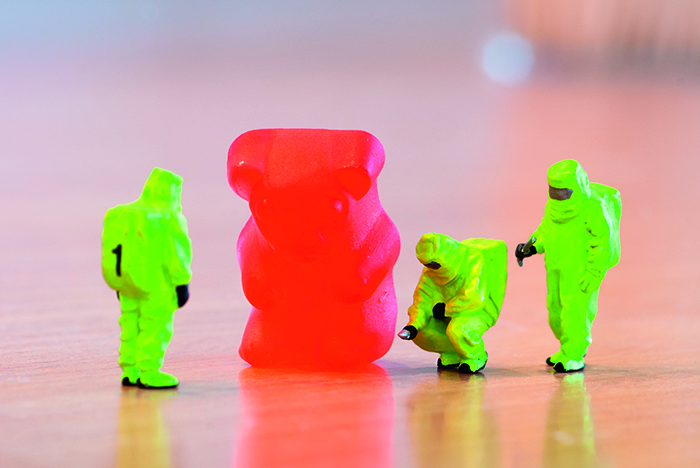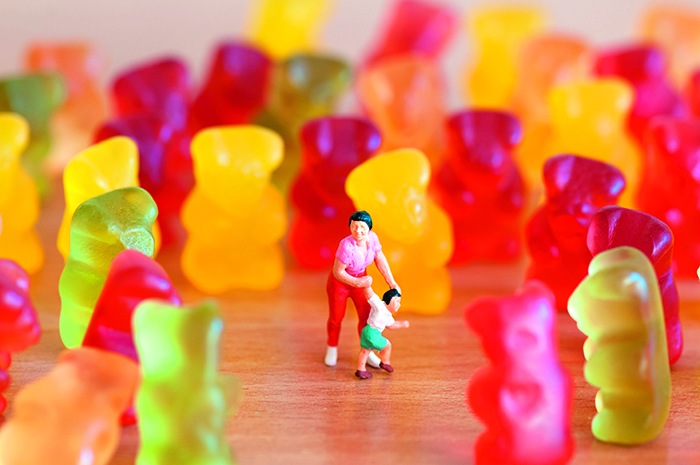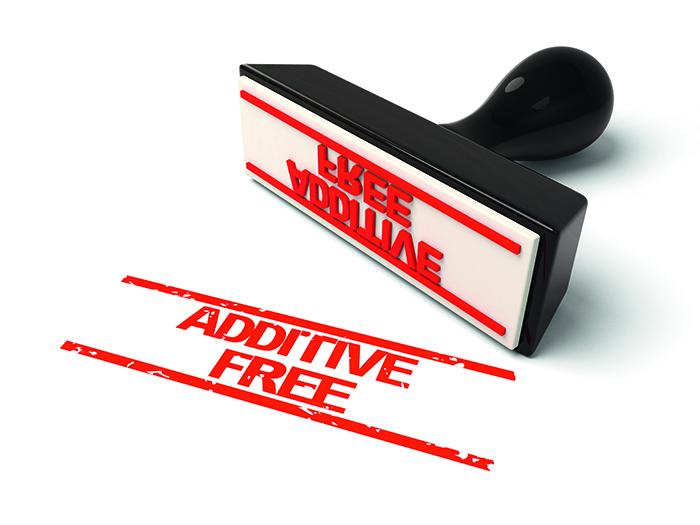Every year we each consume around 5kg of preservatives, additives and other nasties in the food we eat. So, just how safe for human consumption is the food in our supermarkets?
It is reasonable to assume that supermarket food is exactly that – food – and that it is also safe to eat. So, how would you feel if you knew you were buying food products that could exacerbate asthma, rashes, behavioural problems, autism, ADHD, depression, and sleep issues, among other things? A little cheated? Well, it seems there is an element of trickery involved in the vexing world of food additives.
Food additives in some WA products have been banned in the US and European Union because food regulators in those parts of the globe determined that they may constitute a risk to public health. So how come we are still eating popular breakfast cereals, common snacks and other goods loaded with stonkingly aggressive colours while the equivalent foods in more vigilant countries are made from safe fruit and veg extracts? The answer is simple: it's cheaper and our laws don't prevent it.
So where is the Big Brother of food, checking packs of desiccated coconut, for example, to make sure that little Molly isn't left wheezing from her homemade after-school bliss-balls snack? Food Standards Australia New Zealand (FSANZ) is tasked with ensuring our food is, indeed, up to standard. But many passionate campaigners believe it isn't doing its job as well as it could.

Julie Eady started looking at food additives when she was pregnant 15 years ago. Her husband was asthmatic and she was already looking at pesticides and chemicals in household products. "I was eating my lunch one day and I was reading the back of the bottle of the mayonnaise I had used in my sandwich," Julie says. "I remember seeing a chemical that I was avoiding in my cleaning products. So that got me researching and the more I investigated it, the more alarmed and concerned I became. Australia really lags behind many other countries as far as being careful and precautionary." By her count, about 20 additives banned elsewhere can still be found in food products on WA shelves.
So what are these chemicals and why are they still around? Additives are made from a large range of naturally occurring and man-made chemicals, and they are designed to perform an equally large range of tasks. About 6000 additives are out there, in the form of colours, flavours, preservatives, antioxidants, acids, anti-caking agents, artificial sweeteners, emulsifiers, foaming agents, thickeners, stabilisers, glazing agents and propellants – to name a few.
Julie released a book, Additive Alert, more than a decade ago and has since campaigned for change in labelling laws. "We are still using food additives that are known to cause health problems," she says. "Things have improved, and there are lots of people lobbying but our laws have not changed."
Most improvement has come from manufacturers (rather than from FSANZ), responding directly to consumer concern. However, many manufacturers, including those behind some of the most iconic brands on the market, simply aren't willing to change what they do.

In 2010, a University of Southampton study looked at six commonly used colours, in foods as apparently benign as fruit juice. All six were subsequently phased out in the EU, and a new labelling law brought in. "The strawberry milk at your child's canteen would need a warning label in the EU," says Julie. The findings of the study were published in health journal The Lancet, but despite
a subsequent public campaign, FSANZ did not feel compelled to move on the research.
"FSANZ, like European Food Safety Authority (EFSA), the US Food and Drug Administration (FDA) and the UK Committee on Toxicology (COT), concluded there was no causal link between consumption of the Southampton colours and children's behaviour," says an FSANZ spokesperson. "FSANZ therefore concluded there was no reason to lower the safety limits for these colours or to impose any other management measures.
"The United Kingdom and the European Union decisions were based on other factors such as consumer opposition to use of colours, rather than the risk assessment conclusions."
For the layperson in particular, it has become harder than ever to identify additives. Some of us may have become accustomed to reading food packets for compounds we can't easily pronounce, but a new industry operation is about to make things more complicated still. So-called 'clean labelling' aims to replace those ominous-sounding compounds with words that sound less scary. Some companies have reformulated products in a genuine, wholehearted way. Others have simply gone for cheaper alternatives.

In February 2015, journalist Joanna Blythman wrote an in-depth investigation of the EU additives market, Swallow This: Serving up the Food Industry's Darkest Secrets – a compelling if not disturbing read. In it, she outlined just how difficult it is to identify what is real food and what isn't. 'Rosemary extract', for example, undergoes a complicated chemical process, ending up as a brown powder bearing little resemblance to a herb; bags of salad leaves are doused in 'chemical air' to keep them from wilting. But, even those on a diet described as healthy and wholesome, with minimal processed food, are probably still exposed.
Children's naturopath Kelly Epskamp has seen children experience mild to severe reactions to additives, ranging from eczema, asthma, and acute and chronic infections, to brain fog, chronic fatigue, learning difficulties and behavioural issues. "Sometimes doing the basics, such as just getting rid of colours or preservatives, can make a massive difference," Kelly says.
"Have a four or less rule," Kelly suggests. "If a product has more than four numbers, put it back. It can be a way to simplify what can be overwhelming. And check your packaging – even something as simple as salt will have anti-caking agents added."
As Kelly points out, it's easy to feel that it is all too hard. "Don't lose your mind and make it a religion," she says. While children are more susceptible to the adverse affects of these products, it is worth drawing some lines in the sand for their sake. For example, all preserved meats (such as ham) have nitrates in them. Kelly suggests instead roasting a chook or a piece of beef and freezing portions for lunches. "They are building a body with these chemicals that are nutrient-deficient and won't serve them in the long run," she says. "You become the GP of your family with the shopping trolley. What you leave out of it and what you put in it has such a big impact on their current and future health status that it's too good an opportunity to pass up."
What you can do Write to your MP, manufacturers and FSANZ.
Links additivealert.com.au, earlyhealth.com.au, additiveeducation.com.au.
CHEAT SHEET: THE BIG OFFENDERS
-
621-635 (MSG) Known to cause headaches, migraines, skin problems, asthma, and dermatitis. Often MSG appears as 'flavour'.
-
Colours Especially coal tar dyes, including 102, 104, 110, 122, 133.
-
Preservatives 280, 281, 282 Known for causing asthma and behavioural problems, especially in children; 211-218 (benzoates), often found in juice poppers for children.
-
Preservatives 319, 320 Often found in oily products (and cleaning products), such as peanut butter. 320 stops the oil going off, is a powerful antimicrobial and xenoestrogen, and has caused cancer in every animal model it's been studied in. The FSANZ, however, concluded that there was no correlative danger to humans because the tumours found in the test animals appeared in the forestomach, an organ not possessed by humans. It's a finding supported by the EFSA in 2011, says the FSANZ. "Their panel of experts re-assessed the relevance of the animal studies used in earlier assessments and considered that effects noted in the forestomachs of rats are not relevant to the human risk assessment."
-
Artificial sweeteners including 951, 952, 954 Common in kids' foods. These were designed in the 1970s as part of the weight-loss market, and were never tested for their impact on children (they were only tested on adult males). Aspartame is also found in kids' supplements and vitamins, and is known to contribute to sleep and mood problems; there is accumulating evidence of a link to Type 2 diabetes; some early research shows it may also trigger leukaemia.